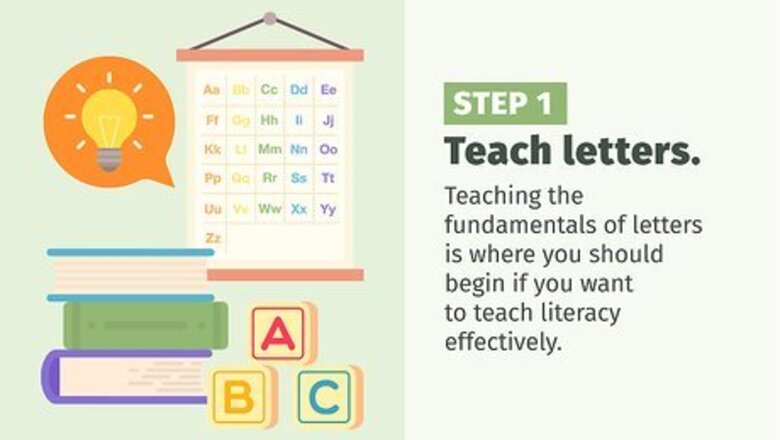
views
Basic Skills
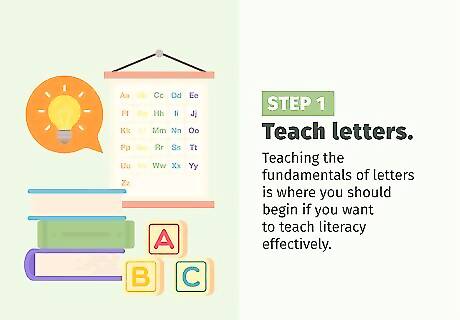
Teach letters. Teaching the fundamentals of letters (what a letter is, what each letter is called, and how it sounds) is where you should begin if you want to teach literacy effectively. Regardless of age level or language, literacy must begin with an understanding of letters. If you are teaching a language with a non-roman alphabet, the same principle applies: teach the characters first. Teach your students how to recognize the different shapes of the letters. They will need to be able to easily differentiate between letter which look the same or letters which sound the same. Size variation is an important part of learning to write letters. Teach your students about capital letters and lowercase letters and when to use them. If teaching a non-roman alphabet, this will be less of a problem. Directionality is another important skill. Your students will need to know what direction letters face and how to properly place them next to each other. For roman lettering, this will be right to left and horizontal. For other languages it can also be left to right or vertical, depending on the region. Spacing is an important skill as well. Teach your students how to place space in between words, sentences, paragraphs, etc.
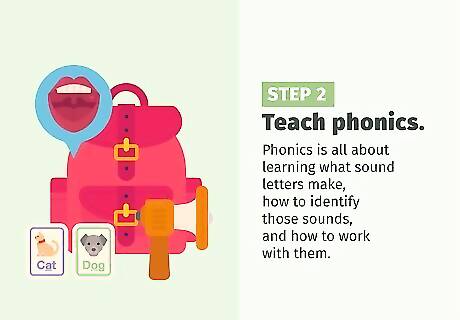
Teach phonics. Phonics is all about learning what sound letters make, how to identify those sounds, and how to work with them. Developing your students’ understanding of phonics will be key to teaching them to read and write. Teach your students to hear. They need to be able to listen to speech and recognize that those words are composed of individual sounds. Once they grasp the concept of those sounds, teach them to identify the sounds. For example, your students will need to be able to hear an “aaaaahhhh” sound and know that it is written with an “a”. Once they are comfortable identifying sounds, you will also need to teach them how to manipulate sounds within words. They should be able to recognize when words rhyme or when one word out of a set begins or ends with a different sound than the others. They should be able to think of their own examples as well. Teach compound sounds as well. You will need to explain that when certain letters appear together, it changes how they sound. For example, in English the “th” or “sh”, in Spanish the “ll”, and in German the “ch” or “eu”.

Teach the forming of words. Once your students have a solid grasp on letters and their associated sounds, you can move on to using those letters and sounds to form words. Read to them frequently at this stage, as well as writing lots of examples for them to look at. This will give them opportunities to see how words are formed. An important part of teaching word formation is teaching your students the difference between vowels and consonants. Teach them which letters are which and explain the necessity of vowels within a word. Teach the basic principles regarding where in a word vowels can go. For example, it is very rare for the only vowel in a word to go at the very end of the word but quite common to have the second letter or sound of a word be a vowel.
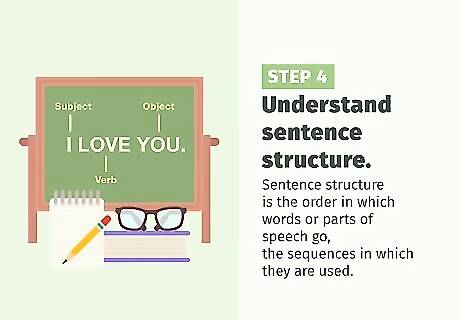
Understand sentence structure. You students will need to learn and understand sentence structure once they have mastered forming words. Sentence structure is the order in which words or parts of speech go, the sequences in which they are used. Understanding sentence structure will be necessary if they are to form written sentences which sound correct. Often people will have difficulty writing naturally like this, even if they speak correctly. Your students should learn how to identify nouns. Teach them what a noun is and where it usually goes in a sentence. The easiest way to explain it will likely be the tried-and-true “person, place, thing or idea”. Your students will need to be able to identify verbs, too. Teach them about “action words” and give them lots of examples. You can have them act out different verbs in order to solidify the concept in their mind. Explain where verbs go in a sentence. Your students will need to be able to identify adjectives as well. Explain that adjectives describe other words. Teach them where these words go in a sentence and how they attach to other words.
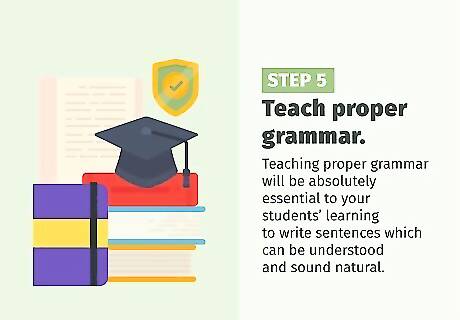
Teach proper grammar. Teaching proper grammar will be absolutely essential to your students’ learning to write sentences which can be understood and sound natural. Using parts of speech together is an important concept in grammar. Your students should develop an understanding of how nouns, verbs and adjectives interact and how they fit together. Where these words go in a sentence and when they must be preceded or followed by another is also important to understand. Tense is a key concept to understanding how to form proper sentences. Your students should learn and practice creating sentences which take place in the past, present, and future. This will teach them how words must be changed in order to indicate time. This is a complex skill and is often not truly mastered until much later. Conjugation and declension are other important skills. Conjugation is how verbs change, depending on how they interact with the other words in the sentence. For example, in English we say “I jump” but we also say “she jumped”. Nouns can go through a similar process, called declension, but it is nonexistent in English. Though it has largely been removed from English, many other languages have case systems which your students will need to understand if they are learning one of those languages. Cases denote the different functions that nouns and pronouns can serve in a sentence and, at least in those languages with a case system, how the case changes the noun (generally with a shift in suffix).
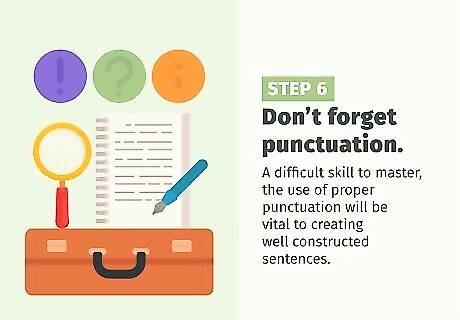
Don’t forget punctuation. A difficult skill to master, the use of proper punctuation will be vital to creating well constructed sentences. Later in life, proper punctuation is often seen as a mark of intelligence and education, so building your students’ skills in this area will be very important for opening up opportunities for them in the future.
Teaching Small Children and Preteens
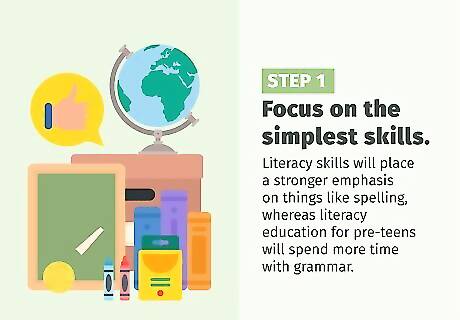
Focus on the simplest skills. When teaching literacy to children and pre-teens, it is important to focus on building the simplest skills first. Emphasize the fundamental building blocks discussed above, as having a thorough understanding of these concepts and skills will give your students a solid foundation on which to build future reading and writing skills. For elementary age children, literacy skills will place a stronger emphasis on things like spelling, whereas literacy education for pre-teens will spend more time with grammar.
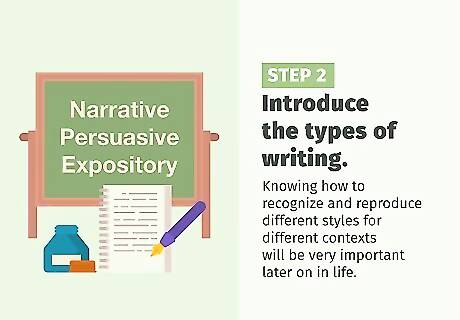
Introduce the types of writing. There are many different types of writing which your students will need to learn about. Knowing how to recognize and reproduce different styles for different contexts will be very important later on in life. Let students experiment with writing about things they're passionate about. Teach your students to recognize narrative writing. This is writing which conveys a story and is the form most often read for pleasure. It is commonly used as an exercise to increase literacy skills. Examples of narrative writing include novels, biographies, history, and newspaper articles. It is easily recognized by the format: “This happened, and then this happened, and then this happened.” and so on. Teach your students to recognize persuasive writing. This is writing which lays out a logical argument. Examples of persuasive writing can be seen in job applications, editorials, and academic papers. Teach your students to recognize expository writing. This is writing which explains, informs or describes something. What you are reading now is an excellent example of expository writing. Newspaper articles can also fall into this category, along with encyclopedias and reports.
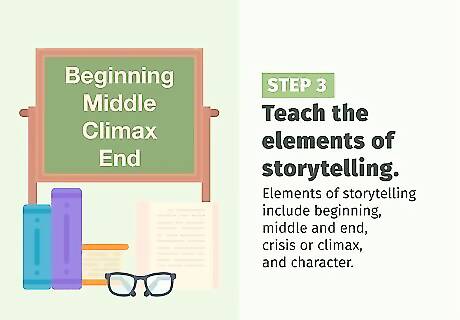
Teach the elements of storytelling. Children in this age-group will need to learn the basic elements of storytelling. This will give them the tools they need later in life in order to analyze the things they read. Elements of storytelling include beginning, middle and end, crisis or climax, and character. These are most easily taught to children when done in tandem with reading a book aloud over the course of a few weeks. This gives you the opportunity to discuss and analyze the text, so that they can see how these ideas work in practice. Solidify these skills by having them write stories of their own.

Introduce the Five Paragraph Essay. The Five Paragraph Essay includes an introduction, three body paragraphs (usually argumentative in some way), and a conclusion. This common form of writing will be used throughout their lives and should be introduced as early as possible. Introductory assignments could include a review of their favorite toy or game, a persuasive essay about why they should be allowed to eat more candy, or a biography of their favorite family member.
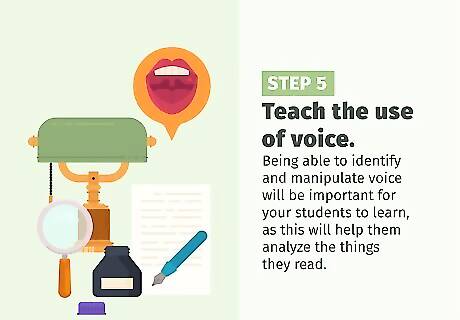
Teach the use of voice. Voice refers to who is “speaking” in a text. Voice can be but should generally not be mixed within a text. Being able to identify and manipulate voice will be important for your students to learn, as this will help them analyze the things they read. Common voices include first person (heavy use of “I/me”), second person (heavy use of “you”), and third person (heavy use of names and “they”). Tense can also be applied to each of these voices, modifying how it sounds and reads. First person example (past tense): “I went for a walk today. My dog, Spike, came with me. Spike likes to go on walks with me.” Second person example: “You went for a walk today. Your dog, Spike, came with you. Spike likes to go on walks with you.” Third person example: “Sarah went for a walk today. Her dog, Spike, went with her. Spike likes to go on walks with her.”
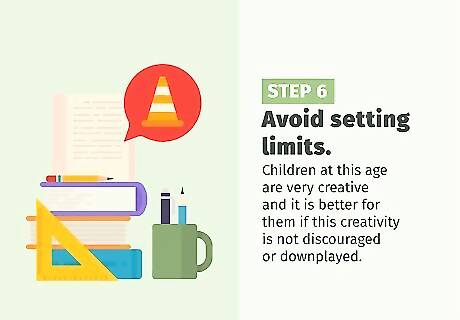
Avoid setting limits. Especially with elementary age children, try to leave as many doors open as possible within their exercises and assignments. Children at this age are very creative (a trait which will be very helpful later in life) and it is better for them if this creativity is not discouraged or downplayed. Children will also learn better by being forced to think for themselves, so giving them opportunities to do that (by leaving assignments and exercises open-ended) will help them significantly.
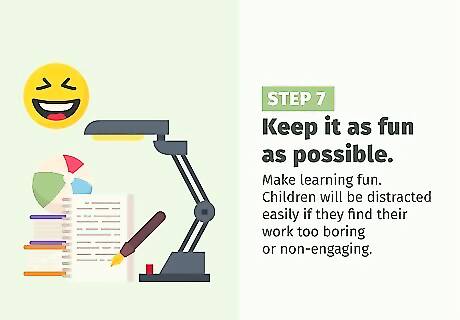
Keep it as fun as possible. Make learning fun. Children will be distracted easily if they find their work too boring or non-engaging. In fusing learning and play, you will ensure that your students are engaged and absorbing information. For example, with middle-school age children you can have them create a game and then write rules for the game. This will be fun but it will also force them to think about writing specific language which is also easy to follow. For elementary children, let them write, edit and illustrate their own books. This will work on developing their understanding of story and character, while simultaneously improving their ability to form correct sentences with proper spelling.
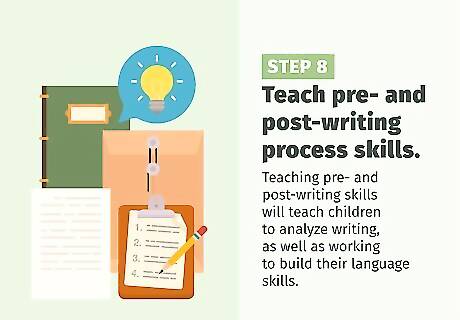
Teach pre- and post-writing process skills. It will be important for children to learn that there is more to writing that just putting words on a page. Teaching pre- and post-writing skills will teach children to analyze writing, as well as working to build their language skills. Outlines are an example of a pre-writing skill. Outlining what they intend to write will help learners work through logical processes. It will also teach them to think of elements of writing (different paragraphs or subtopics) as a unified whole, rather than pieces simply placed next to each other. Editing is an example of a post-writing skill. Editing their own work, as well as the work of others, will build language skills. This will make your students more competent writers, as well as increasing their confidence in their writing. If they know how to look for mistakes and correct them, they will be less restrained by fear of failure.
Teaching Teenagers

Build on earlier skills. Just because your students should have learned basic grammar or spelling when they were younger does not mean that those skills should be neglected now. Continue to build on and maintain skills like grammar, spelling, parts of speech, voice, tense and writing style. This will keep their skills sharp, as well as helping any students who may have fallen through the cracks.

Encourage creativity. By this older stage, many people will have a reduced capacity for creativity. Creative thinking skills, however, lead people to be better problem solvers and innovators, so such skills should be fostered in any way possible. Writing is one of the best opportunities for students to bring creativity into their academics. Encourage them to take new approaches to assignments and methods of reading.

Emphasize critical thinking. During this time in their lives, children should be developing the skills necessary to prepare them for higher learning. This will ensure that they have the most opportunities possible. An absolutely necessary skill for higher education, as well as a vital life skill, is critical thinking. Encourage your students to really think about the things they are reading and writing. This will prepare them to do everything from analyze news stories to participating fully in the political process. Have your students ask questions about what they are reading. Who wrote this book? Why did they write it? Who did they write it for? What impact did the environment around them have on the text? There are many questions like these which can serve to illuminate information hidden within the things they read. Have your students ask questions about their own writing. Why did I choose this voice? Why do I have the opinion I've expressed? Why is this something I care about? What would I rather be writing? These kinds of questions can lead your students to learn a lot about themselves but it will also help them make more conscious decisions about the things they write.
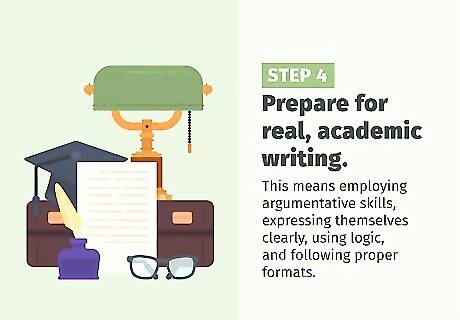
Prepare for real, academic writing. If you want your students to have a real opportunity at getting a higher education, they will need to be able to do the more complex types of writing which are common in colleges, universities, and training programs. This means employing argumentative skills, expressing themselves clearly, using logic, and following proper formats. Give them opportunities to practice these skills while pursuing topics that interest them.

Encourage reading. We often become better writers by reading excellent examples of the craft. Get your teens reading well written, classic literature. Give them books in widely varying styles so that they can see differences in voice, description and word choice. They should be given older works which remain classic, in order to see why certain techniques are timeless and hold wide appeal. They should also read newer material, so that they have solid models to build on for their own writing. This will have the added benefit of often expanding a student’s vocabulary. Encourage them to look up any word they don’t know. This will help give them the adult vocabulary which is often a mark of a good education, which will help them exponentially in further academic and professional environments.

Teach careful word choice. Many inexperienced writers will often use far more or far fewer words than they need to. Guide them until they learn to balance description, dialogue, detail and information. This is a very difficult skill to learn and will take time as well as a great deal of practice. Get overly wordy writers to learn what should be included and what is just overkill. This will often be a wealth of adjectives or repetitive sentences. Show them how to weed out extras and get their sentences down to the basics. A smaller portion of writers will have a hard time getting descriptive and specific enough. Teach them to remove themselves and approach their writing with a list of requirements. Could this be understood by someone entirely new to the subject? Could someone come to a specific page and be able to follow along? Give them exercises, such as having to write an entire page describing an apple, to improve their skills.

Develop handwriting skills. An important skill for teens to develop is adult-level handwriting. While rounded, uneven characters with childish shapes are acceptable for beginning students, teens will want to develop a more “adult” appearance to their handwriting if they want to be taken seriously in future academic and professional endeavors. Give teens lots of opportunity to practice their handwriting. Most assignments are typed these days and this removes a student’s chance to improve their handwriting. Require shorter assignments to be handwritten or find other ways for them to spend time improving their skills. Encourage legibility, even lettering, and clean lines. The writing doesn’t need to be in cursive in order to look adult and professional, it simply needs to be precise. When teens excel at this, reward them. If they struggle, show them what needs to be improved and give them opportunity to fix mistakes. Give handwriting exercises as minor extra credit. Repeated lines of the same letter will give students great practice and allow them to easily see improvements and become acquainted with appropriate gestures.
Teaching Adults
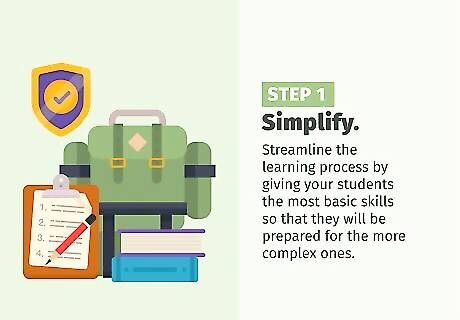
Simplify. Adults should learn literacy in many of the same ways as a child would. These are basic building blocks and should not be skipped, just because they are simplistic. Streamline the learning process by giving your students the most basic skills so that they will be prepared for the more complex ones.
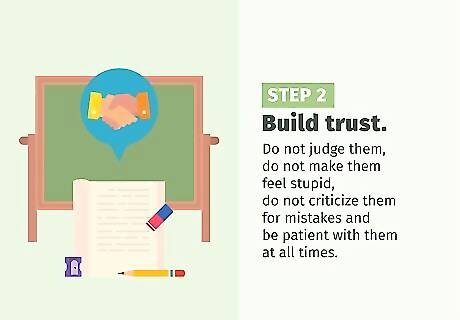
Build trust. Because there is such a social stigma attached to adult illiteracy, you will absolutely have to develop trust with your students. Do not judge them, do not make them feel stupid, do not criticize them for mistakes and be patient with them at all times. Most of all, show them that you make mistakes too. Show them when you don’t know things. Let them see you look a word up in a dictionary, to find its spelling or meaning. Let them see you ask for help when you need it, such as if you are unsure of the grammar of a sentence. Modeling behavior in this way will show your students that not knowing something is not a sign of stupidity or weakness of character.
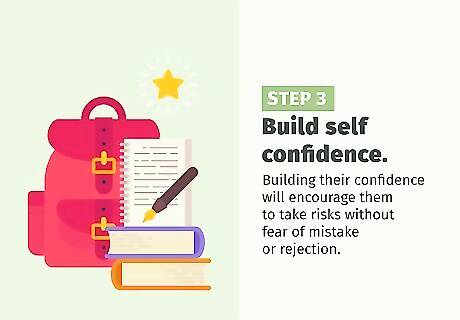
Build self confidence. Build their self confidence. Illiterate adults are often ashamed of themselves for not knowing how to read or write. Building their confidence will encourage them to take risks without fear of mistake or rejection. Doing that is essential to the learning process. When your students do well, tell them so. When your student makes a mistake, emphasize any way in which they were right or acting logically before showing them how to do it correctly.

Foster passion. People who love something will always put more work into it and do it better at it than those who are doing something they don’t like. Give your students a reason to love what they are doing. Men might enjoy being able to read sports stories or game descriptions, where women might enjoy reading about beauty tips or how to make their own clothes and accessories.
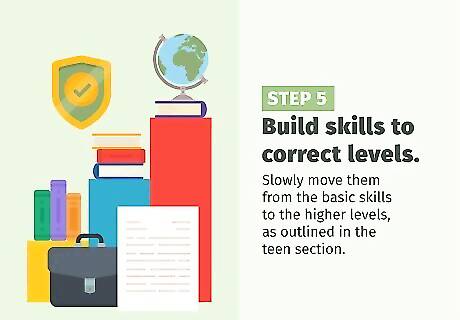
Build skills to correct levels. Slowly move them from the basic skills to the higher levels, as outlined in the teen section. With time they will reach a skill level appropriate with their age. This will significantly improve their work prospects as well as their confidence.




















Comments
0 comment